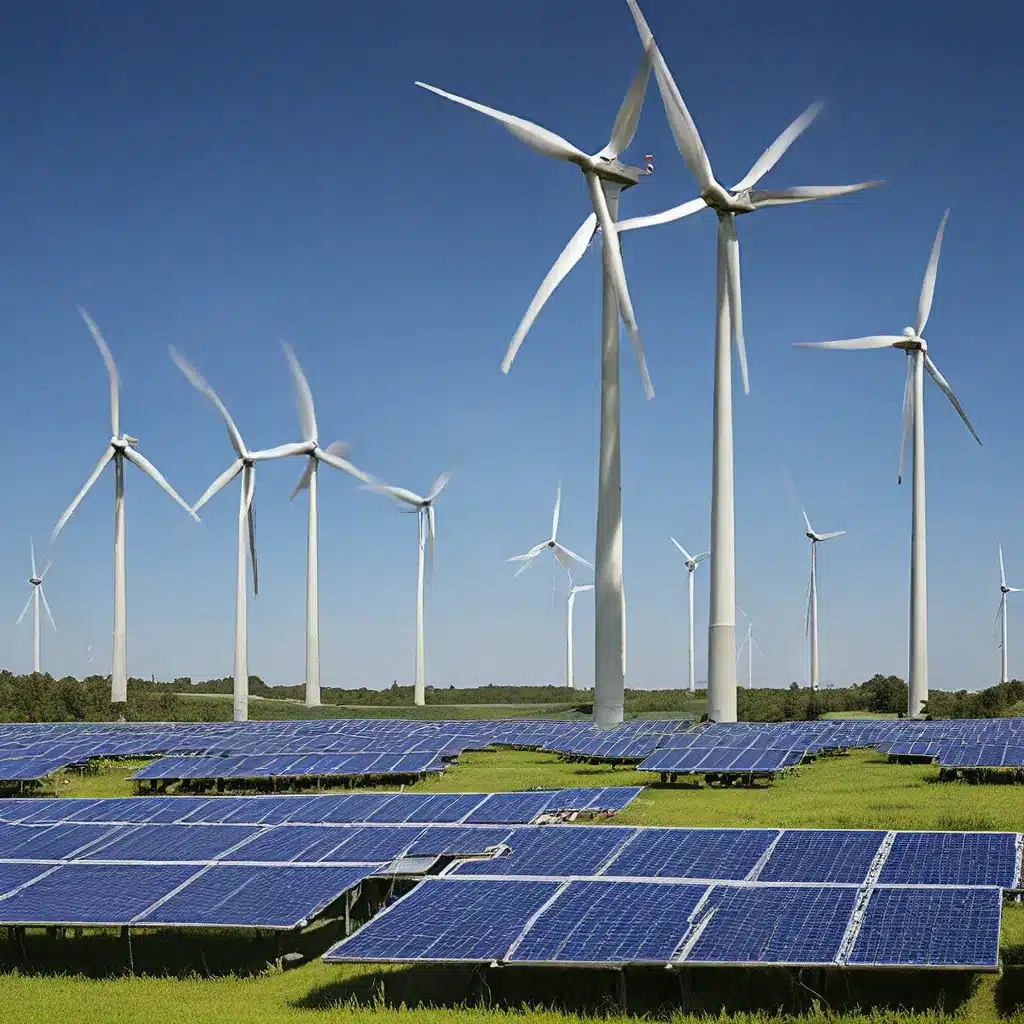
As someone who’s passionate about sustainability and protecting our planet, I can’t help but get excited when I think about the incredible potential of renewable energy. It’s like a secret superpower that’s just waiting to be unleashed – one that can help us tackle some of the biggest challenges we’re facing, from climate change to air pollution to energy insecurity.
Let’s dive in, shall we? First up, the climate change elephant in the room. We all know that burning fossil fuels like coal, oil, and natural gas is the primary driver of global warming, but did you know that the electricity sector alone accounts for around 29% of all greenhouse gas emissions in the United States? Yikes! That’s a huge chunk of the problem, but the good news is that renewable energy sources like wind, solar, geothermal, and hydroelectric produce little to no global warming emissions at all. In fact, a groundbreaking study by the National Renewable Energy Laboratory found that renewable energy could help reduce the electricity sector’s emissions by a whopping 81% by 2050. That’s the kind of progress we need to see if we’re going to have any chance of avoiding the worst impacts of climate change.
But it’s not just about climate change – renewable energy also has a massive impact on our air quality and public health. Burning fossil fuels releases all sorts of nasty air pollutants like particulate matter, nitrogen oxides, and sulfur dioxide, which are linked to a whole host of respiratory issues, heart problems, and even cancer. In fact, a Harvard University study estimated that the life cycle costs and public health effects of coal alone add up to a staggering $74.6 billion every year – that’s equivalent to about a third of the average electricity rate for a typical US home! In contrast, wind, solar, and hydroelectric systems generate electricity with zero air pollution emissions, while geothermal and biomass systems have much lower overall emissions than their fossil fuel counterparts.
And let’s not forget about water resources. Fossil fuel power plants, especially coal and natural gas, can have a huge impact on our water supply, both in terms of pollution and consumption. They often withdraw and consume huge amounts of water for cooling, which can strain our already-limited freshwater resources and compete with agriculture, drinking water, and other critical needs. Renewable energy technologies, on the other hand, generally have a much smaller water footprint – wind and solar, in particular, require virtually no water to operate. The NREL study I mentioned earlier even found that a future with high levels of renewable energy would actually decrease overall water consumption and withdrawal compared to our current fossil fuel-dominated system.
Now, I know what you might be thinking – “But renewable energy is just too expensive and impractical, right?” Wrong! In fact, the costs of wind, solar, and other renewable technologies have been plummeting in recent years, to the point where they’re now often the cheapest option for new electricity generation. The average price of installing solar, for example, has dropped more than 70% since 2010, and the cost of wind power has fallen by a whopping 66% since 2009. And as these technologies continue to mature and economies of scale kick in, the prices are only going to keep going down.
But the benefits of renewable energy go far beyond just the financial bottom line. It’s also a major job creator, supporting hundreds of thousands of positions in the United States alone – from manufacturing and installation to operations and maintenance. In 2016, the wind industry directly employed over 100,000 full-time workers, while the solar industry employed more than 260,000 people. And these are often high-quality, well-paying jobs that can’t be outsourced to other countries.
Plus, renewable energy can provide a crucial buffer against the price volatility and geopolitical risks associated with fossil fuels. As we’ve seen all too clearly with recent spikes in oil and natural gas prices, our over-reliance on these finite resources can leave us vulnerable to supply disruptions, market fluctuations, and even global conflicts. Renewable energy, on the other hand, is sourced from abundant, replenishable resources that are available right here at home – no need to worry about overseas turmoil or the latest international trade drama.
And let’s not forget about the resilience and reliability of renewable energy systems. Unlike centralized fossil fuel power plants, which can be brought down by everything from severe weather to cyberattacks, distributed renewable energy like solar and wind is much more resistant to large-scale failures. Hurricane Sandy, for example, caused widespread damage to fossil fuel infrastructure in the Northeast, but renewable energy projects in the region weathered the storm with minimal disruption.
So, as you can see, the environmental, economic, and social benefits of renewable energy are truly staggering. And the best part is, we’re really just scratching the surface of what’s possible. The International Renewable Energy Agency estimates that 90% of the world’s electricity could and should come from renewable sources by 2050 – a goal that’s absolutely within our reach if we have the vision and the willpower to make it happen.
Of course, getting there won’t be easy. There are still some technical, financial, and regulatory hurdles to overcome, and we’ll need to ensure a just transition that protects workers and communities currently dependent on fossil fuels. But with the right policies, investments, and collaborative efforts, I truly believe we can create a cleaner, more sustainable, and more equitable energy future for all.
So, what are we waiting for? Let’s harness the incredible power of renewable energy and build the world we want to see – one that’s healthier, more resilient, and more prosperous for generations to come. Who’s with me?

